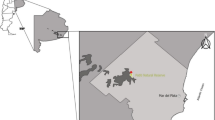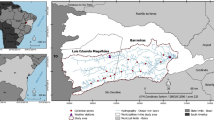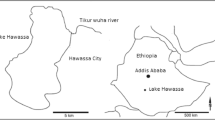Abstract
Temporal trends of organochlorine pesticides such as β-hexachlorocyclohexane (β-HCH), hexachlorobenzene (HCB), and 1,1-dichloro-2,2-bis(p-chlorophenyl)-ethylene (p,p′-DDE), were determined in freshwater prawn (Macrobrachium nipponense) collected from Lake Kasumigaura in 1978 to 2000. The organochlorine pesticides elucidated a 72.4% decrease in β-HCH, from 42 (1978) to 11.6 ng/g fat (2000); an 89.6% decrease in HCB, from 1.64 (1978) to 0.17 ng/g fat (2000); and an 87.3% decrease in p,p′-DDE, from 97.5 (1978) to 12.4 ng/g fat (1992). After organochlorine pesticide prohibition in 1971, the declining trend of β-HCH, HCB, and p,p′-DDE concentrations persisting in the prawns could be approximated by exponential equations.
Similar content being viewed by others
Author information
Authors and Affiliations
Rights and permissions
About this article
Cite this article
Sunardi, Kumar, ., Masunaga, . et al. Temporal Trends of Organochlorine Pesticides in Prawn (Macrobrachium nipponense) from Lake Kasumigaura, Japan, During 1978–2000. Arch Environ Contam Toxicol 47, 94–100 (2004). https://doi.org/10.1007/s00244-003-3154-y
Issue Date:
DOI: https://doi.org/10.1007/s00244-003-3154-y




